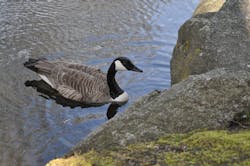Environmental Officials Announce Action Agenda to Restore Long Island Sound
Top officials responsible for the health of the Long Island Sound from the two U.S. Environmental Protection Agency (EPA) regions, the New York Department of Environmental Conservation, and the Connecticut Department of Energy and Environmental Protection announced a blueprint for coordinated actions through 2013 to protect and restore the water source.
The agenda contains 54 actions organized around four themes: waters and watersheds, habitats and wildlife, communities and people, and science and management.
Within these themes, priority actions are identified to improve water quality, restore habitat, conserve the land, maintain biodiversity, and increase opportunities for human use and enjoyment of the sound. The agenda is consistent with the Citizen Advisory Committee’s SoundVision Action Plan.
In addition to continuing progress in reducing nitrogen pollution and mitigating combined sewer and sanitary sewer overflows, the agenda commits to research storm water practices to control nitrogen, pilot innovative strategies to use shellfish and seaweed to mitigate nitrogen pollution, and designate all of Long Island Sound as a “no discharge zone” for vessel waste.
"A clean and healthy Long Island Sound is a fantastic resource for both recreation and a vibrant economy," said EPA Regional Administrator Curt Spalding said. "The Action Agenda is a clear road map for coordinated efforts among many levels of government and concerned communities for us to achieve a cleaner, healthier Long Island Sound for people to enjoy."
Long Island Sound is one of the largest urban estuaries in the U.S. It provides economic and recreational benefits to millions of people in Connecticut and New York, while also providing natural habitats to more than 1,200 species of invertebrates, 170 species of fish and dozens of species of migratory birds.
Source: EPA
